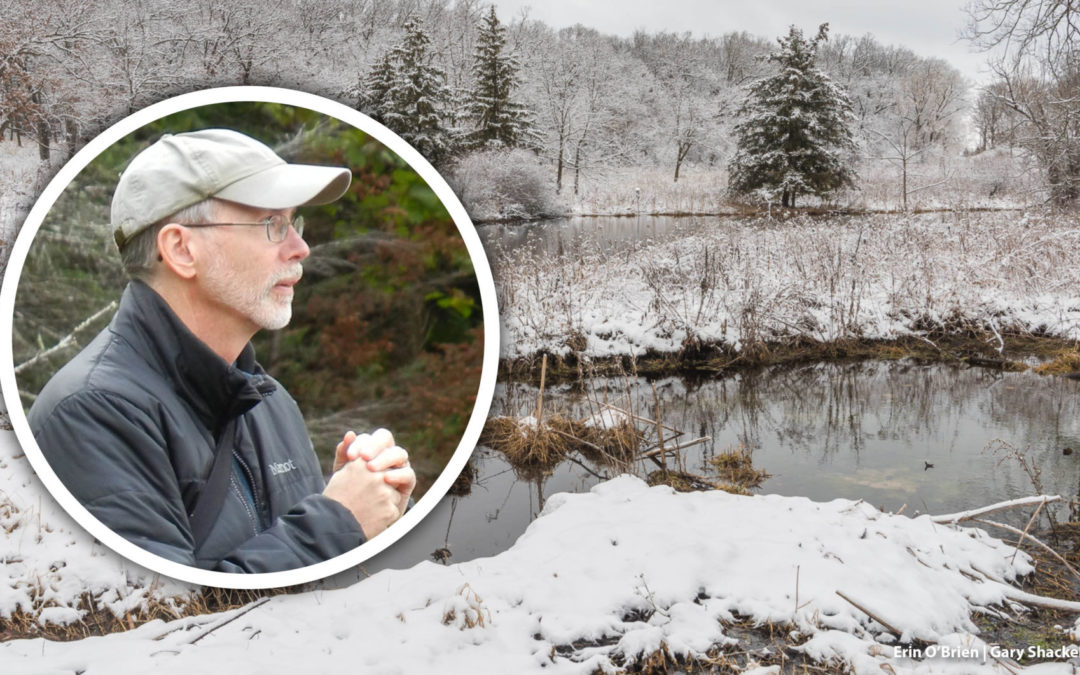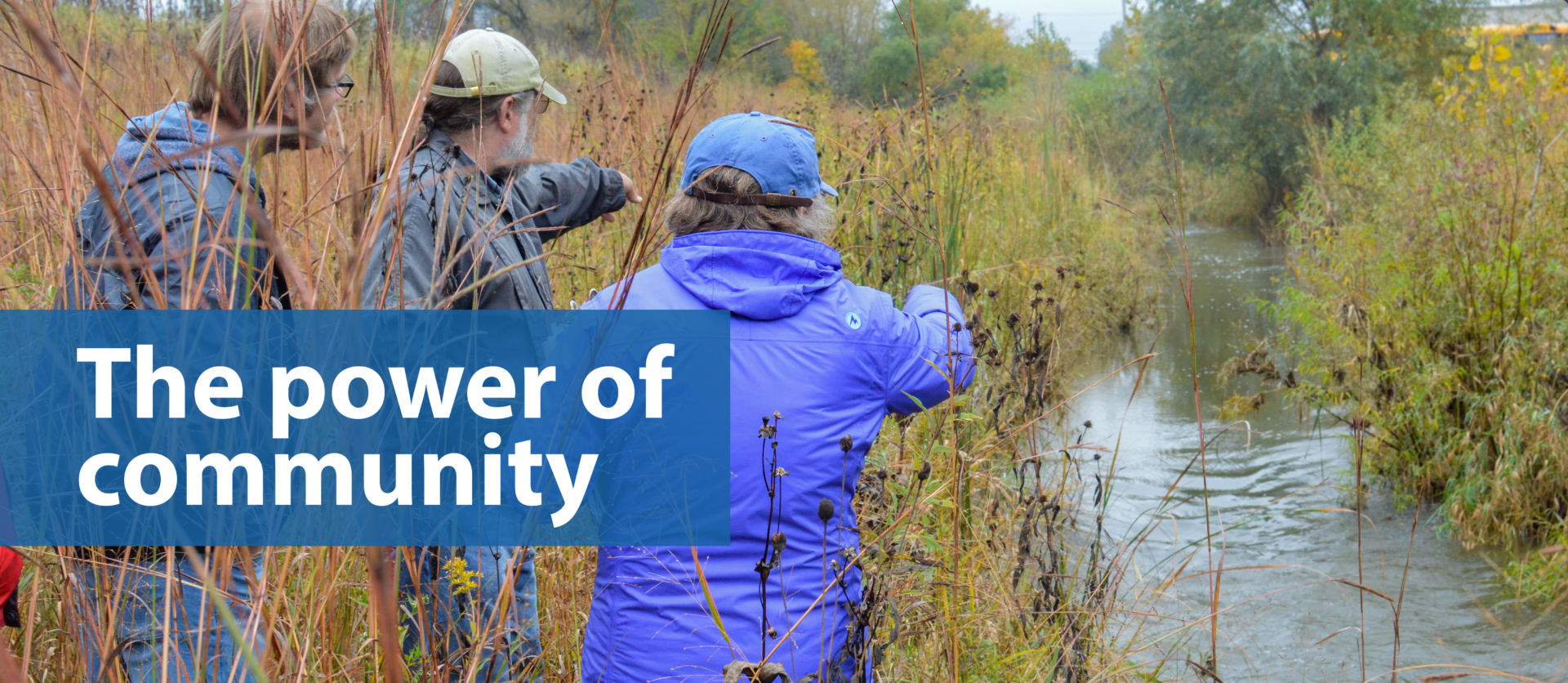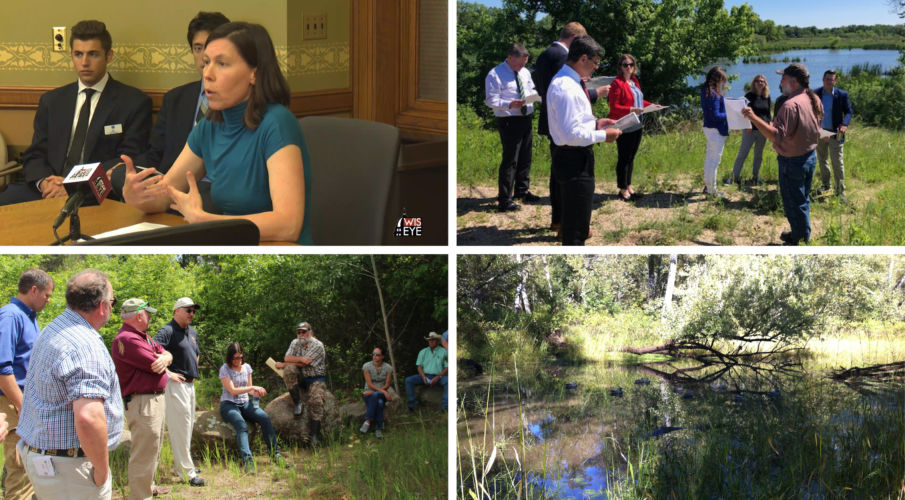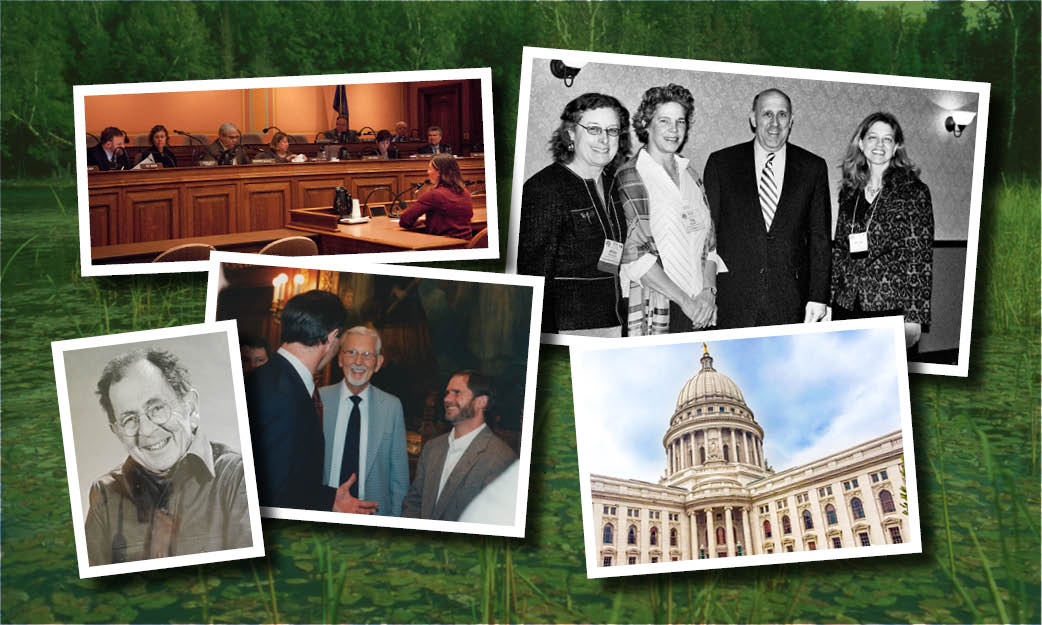As Wisconsin Wetlands Association’s 50th Anniversary comes to a close and our next 50 years begin, our board member and treasurer Tod Highsmith reflects on our history and looks to our future:
The first wetland I fell in love with was a three-acre kettle hole marsh on my family’s property in Jefferson County. As a kid, I caught frogs there, hunted ducks there, and explored every spongy, muddy inch of it throughout the seasons.
Because it has no defined inlet or outlet, I’ve always thought of that marsh as an “isolated” wetland, a small blue-and-green jewel nestled in the palm of an encircling drumlin.
But, of course, that marsh was never really isolated at all. It’s always been connected to the rain and to groundwater, and, thus, to all the waters on Earth. It’s connected to the plants who transpire its wetness back into the sky and to the wildlife who transform its fruits into fur and bone and feathers.
Sometimes, as a person who loves and values wetlands, I can also feel a little isolated. With so much change and turmoil throughout the planet, is there anybody else, I wonder, who remembers that we need bogs and fens and turtles and duckweed to make the world run properly?
As an antidote, I just contemplate WWA’s amazing fifty-year history of wetland community building.
I picture myself at WWA’s annual science conference, sharing and learning with 400 other wetland professionals and students and concerned citizens. Or I recall the network of public and private landowners we’ve built, with whom we work together to protect and restore our state’s wetland heritage.
And I can watch as our wetland community expands in directions that might formerly have seemed beyond our reach. Who would have thought a decade ago that we’d bring together potato farmers and trout fishers to restore the hydrology of the Little Plover River?
Or that we’d be helping transportation interests (instead of battling them) in the Lake Superior Basin explore wetlands as solutions to highway washouts and flooding?
That we’d regularly host state legislators (of both parties) on muddy-boot tours to show them firsthand how their districts’ wetlands can help solve water quality and quantity issues?
It seems wherever we go these days, WWA finds more and more people who understand—or are eager to learn about—the many benefits of healthy wetlands on the landscape.
And you know, suddenly I don’t feel so isolated.
If you, like Tod, want to be a part of the growing community of people who are eager to learn about and promote the many benefits of healthy wetlands on the landscape, become a member with Wisconsin Wetlands Association.
The Power of Community: Advancing Wetland Conservation in Wisconsin
Look back at the last 50 years of wetland policies and how WWA approach has evolved over the years.




